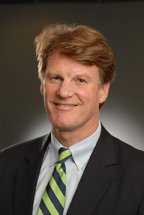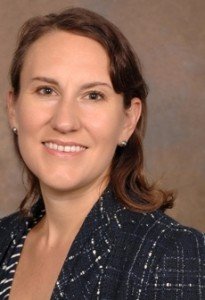By Paul E. Keck, Jr., MD
President-CEO, Lindner Center of HOPE
Frances & Craig Lindner Professor & Executive Vice Chair
Department of Psychiatry & Behavioral Neuroscience
University of Cincinnati College of Medicine
Bipolar disorder is common and recurrent psychiatric illness associated with high rates of morbidity, disability and mortality. In the United States, the 12-month prevalence rate of bipolar I and II disorder is estimated at 2.6%. Bipolar I disorder is distinguished from major depressive disorder by the occurrence of manic episodes. Bipolar II disorder is distinguished from major depressive disorder by the occurrence of mild manic symptoms, and depressive episodes tend to predominate the course of illness.
Symptoms of mania include: abnormally and persistently elevated, expansive or irritable mood, excessive energy or activity, psychomotor agitation, decreased need for sleep, grandiosity, excessive speech, racing thoughts, distractibility, impulsivity, and poor insight. Manic episodes often constitute a medical emergency requiring hospital admission and severe depressive episodes similarly pose a risk of suicide and need for hospital care.
Bipolar disorder frequently presents early in an individual’s life, frequently between the ages of 16-24, and often the initial mood episode may be depression, further complicating the diagnosis. Bipolar disorder is highly heritable. Clinical predictors of bipolar disorder include a family history of a first degree relative with bipolar disorder and early age of onset of depression.
Fortunately, there have been substantial advances in the evidence-based treatments of bipolar disorder over the past several decades. The goals of treatment of acute mood episodes (manic, mixed, and depressive) are rapid, complete remission in a safe environment. The goals of long-term or maintenance treatment are prevention of further episodes, eradication of sub-syndromal symptoms, and optimizing quality of life and function.
The treatment of bipolar disorder is often complicated because of a number of factors. First, bipolar disorder is the single psychiatric illness associated with the greatest degree of comorbidity. For example, addictions, anxiety disorders, eating disorders, migraine, overweight and obesity, and diabetes are all more common in people with bipolar disorder than in the general population. Thus, treatment recommendations often require addressing not only the symptoms of bipolar disorder itself, but also concurrently addressing comorbid illnesses.
Second, within the realm of bipolar disorder itself, although classified as a mood disorder, this illness is also fraught with symptoms in behavior, cognition and perception, as well as insight.
Third, treatment is further complicated by the diversity of illness presentation. For example, there are often substantial differences among patients in the pattern, frequency, and severity of mood episodes, the presence of absence of psychosis, and in acute or chronic psychosocial and other environmental stressors. Further, some medications have particular efficacy in one phase of illness but not in another, and some may actually increase the likelihood of precipitating a reciprocal mood episode.
Evidence-based treatment of bipolar disorder is generally categorized by treatment of acute mood episodes and maintenance treatment, designed to prevent recurrent symptoms and episodes. Medications with evidence of efficacy in the treatment of manic episodes include: first- and second-generation antipsychotic drugs, lithium, valproate, and carbamazepine. Medications with evidence of efficacy in the treatment of bipolar depressive episodes include: olanzapine, olanzapine-fluoxetine combination, lithium, quetiapine and lurasidone. The co-administration of unimodal antidepressants in the treatment of bipolar depression remains controversial, although clinically a substantial subgroup of people with bipolar depression appears to need such agents.
Within the many types of antidepressants, some data indicate that SNRI’s may pose a greater switch risk. Medications with evidence of efficacy in maintenance treatment include: lithium, olanzapine, lamotrigine, aripiprazole, quetiapine, and long-acting injectable paloperidone. Many people with bipolar disorder require a combination of medications to achieve and sustain euthymia. It is also important to recognize that certain medications that were once thought promising for bipolar disorder have not been proven to have efficacy in any phase of the illness. These include, for example, topiramate, gabapentin, and oxcarbazepine.
Although pharmacotherapy is the foundation of treatment of bipolar disorder, there are now evidence-based psychosocial treatments that improve outcome. These are primarily for the maintenance phase of treatment, have the greatest impact on depression and treatment adherence, and include: individual and group psychoeducation, individual interpersonal and social rhythm therapy, cognitive-behavioral therapy, and family-focused treatment.
Resources
Keck PE, Jr, McElroy SL. Pharmacological treatments for bipolar disorder. Nathan PE, Gorman JM, eds. A Guide to Treatments That Work, 3rd edition, Oxford, NY, 2007, pp. 323-350.
Miklowitz DJ, Craighead WE, Psychosocial treatments for bipolar disorder. Nathan PE, Gorman JM, eds. A Guide to Treatments That Work, 3rd edition, Oxford, NT, 2007, pp. 309-322.
http://www.nimh.nih.gov/health/topics/bipolar-disorder/index.shtml









